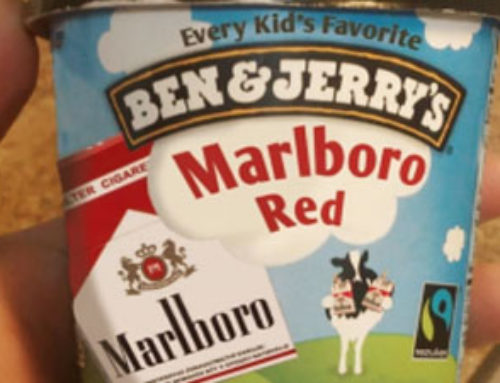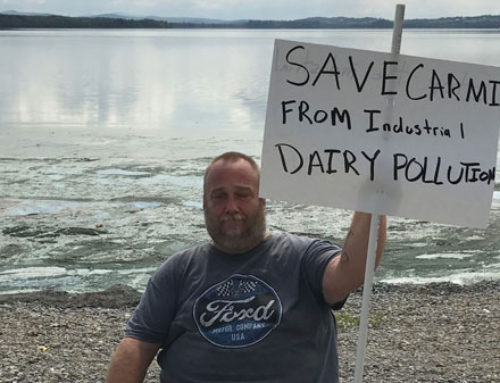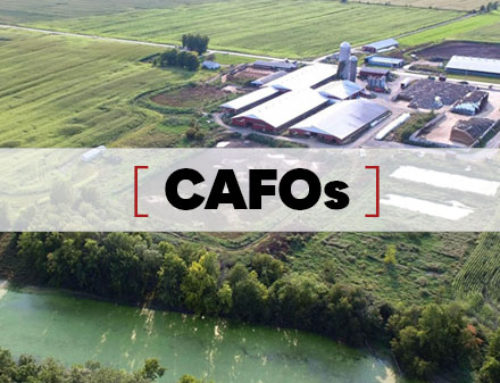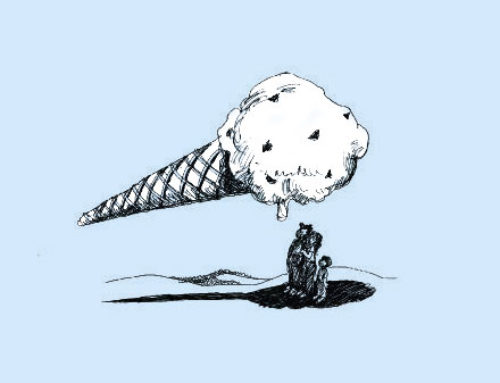By Michael Colby
Vermont’s agricultural narrative is overdue for a change. The tale of family farmers, grazing cows, thriving communities and across-the-board artisan quality is almost a museum piece at this point. While the images still dance in our heads – and in the marketing campaigns – they’re mostly a thing of the past.
Vermont is poised for our Phoenix-like moment, out of the ashes of the industrial agriculture that is our current economic, ecological and cultural burden can come a new paradigm, one steeped in a regenerative ethic that seeks to put the culture back in agriculture, the people back in farming, and the dignity back in farm work.
But we can’t get there until we first know how we got here.
Vermont bought the industrial agriculture model, hook, line and sinker. It now accounts for nearly 80 percent of our farm output, and almost all of it exported. That’s why nearly 95 percent of the food Vermonters consume is imported – we’re too focused on commodity dairy to feed ourselves.
It’s about more than who’s feeding whom. The way Vermont farms is the way we identify ourselves, and even mark history. Our relation to the land – fields, forests, lakes and rivers – is how we’ve always portrayed ourselves. After the stain that is the steamrolling of the great native people, we have been trying to find the balance we destroyed, between people and place.
But we’ve always gone too far, becoming trapped by a single-product economy that, increasingly with time, squeezes the farmer or the logger or the herder right out of existence.
We did it with logging from the get-go, taking too much too fast, and creating a silted mess of our waterways, and denuding our mountains and hillsides. Suddenly, there was nowhere to hide.
But we made pastures out of everything, for the sheep. We put them everywhere, as we became the sheep people, the grand dominators of this meat and fiber endeavor. Until we overdid it, becoming overly dependent on it, and thus vulnerable and exposed to what was a crash in the sheep market, as new breeds and better western climates pulled the plug on our sheep era.
It’s said that history doesn’t repeat — it rhymes. In this case, sheep rhymes with cow. Because here we are, in 2017 Vermont, and our cow dilemma is looking a lot like our sheep dilemma of centuries past. We’re captured by a single-product farm economy, this time dairy, and we are in deep denial about the painfully obvious signs of both the severe rural decline we’re living amidst and the urgent need for change. It is slipping away.
Not even Vermont Life could survive the disappearing act of its subjects, the family farms and the thriving villages, the stars of a magazine that made its living putting a glossy focus on the state’s rural imagery. This state-funded magazine, all part of the commerce department, recently met its unceremonious end as the state pulled its funding, itself a victim of Vermont’s dramatic rural decline.
The change is happening. The decline is obvious. It’s just a matter of how quickly we want to change the narrative, get out from under yesterday’s failed paradigms, and get on with our next agricultural chapter.
“Our economy needs to know – and care – what it is doing,” is how Wendell Berry summarized our grand challenge. And Vermonters have long valued our caring intentions, which is why the more we get to know what’s happening in our current agricultural economy, the more we care – and the more we’re ready for a new direction.
Vermont’s current agricultural story – now four or five decades too old – was born of industrialism and handcuffed to a commodity-based pricing system that has served its purpose: to put the small, family farm out of business.
Consolidation is what Big Ag called for, and its godfather, the USDA’s Earl Butz, wasn’t shy about declaring the plan: “American agriculture’s like a big pie. Right now we’ve got lots of farmers, and each one is getting a small slice of the pie. We need to eliminate a bunch of them, so that those that are left will get a lot bigger slice.”
That was in 1954, a year in which Vermont had 15,981 farms. Today, there are about 800 left. Mission accomplished.
But it’s about more than size. It’s also about method.
The vast majority of the remaining farms are confinement dairy operations, also known as concentrated animal feeding operations (CAFOs), in which hundreds and thousands of cows are basically warehoused, never – ever – given a chance to graze, from birth to death, with a decreasing lifespan that now averages around five years. That’s when they make their inglorious transition from a dairy supplier to the meat locker, accounting for more than half of the total meat supply last year.
These dairy factories are a long, long way from the family farms that once dotted Vermont’s landscape. The lush pastures are a thing of the past, reserved for marketing or photo-ops, as GMO-corn crops grown for cows now dominate the landscape. Feed corn is the state’s top row crop – by far — grown on nearly 100,000 acres annually in Vermont. In addition to copious amounts of fertilizers, the nitrogen-depleting GMO-corn requires its chemical rituals, including a regular dousing of Monsanto’s glyphosate and atrazine.
And then there is the manure. Today’s confined dairies feed more than 100 pounds of grain-rich feed a day to each cow. While this gorging is aimed at maximizing milk production, it also creates an enormous amount of manure and urine. The U.S. EPA’s risk assessment of CAFOs found that “a farm with 2500 dairy cattle is similar in waste load to a city of 411,000 people.”
Currently, there are around 135,000 cows in Vermont, with roughly 80 percent being confined cows. According to the EPA’s cow-to-people waste ratio, Vermont’s cows are creating the waste stream equivalent to nearly 18 million people, or the populations of the four largest U.S. cities combined (New York, Los Angeles, Chicago and Houston).
It’s a stunning amount of manure, and its disposal is achieved by spreading it in a most noxious slurry form to saturation levels on farm fields – all untreated. The Vermonter who has wrangled with engineers and state inspectors – all for good reason – over home septic systems would get a dark chuckle out of the contradictions.
It’s taking its toll. The ecosystems are telling an obvious tale of nutrient overload, as waterways are being choked with cyanobacteria at staggering levels and increasing numbers. Last summer, for example, there were over 200 reported outbreaks – or blooms — of this toxic bacteria, which foams and thickens at its worse, closing beaches and chasing people away from its foul smell.
This is not just some nuisance that’s keeping the kids out of the water for a bit. It’s highly toxic, and even deadly, especially for wildlife, pets and children. The Vermont Department of Health warns the public about cyanobacteria’s potential link to ALS and other serious health threats, including liver disease.
Most of Vermont’s water pollution is a result of confinement dairies creating too much manure in too concentrated of an area. In some regions, like Lake Carmi in Franklin County, considered to be ground-zero for the state’s industrial dairy pollution crisis, dairy farm runoff is causing 85 percent of the water woes (Vermont Agency of Natural Resources).
So we know what the industrial agricultural economy is doing, and, thankfully, we are starting to care. And it’s largely because it’s getting costly. The total cleanup for Vermont’s waterways is now expected to reach between $2 billion and $3 billion. Again, most of it is caused by a dairy industry that is now contributing only 1.4 percent to the state’s gross domestic product. How much pollution are we willing to endure for such a tiny part of our economy, especially when it comes with such huge cleanup costs, all borne by taxpayers?
“Today, farming is an important part of Vermont’s history, heritage, and culture,” writes Art Woolf, an oft-quoted University of Vermont economist, “but it will never be a large part of our economy.”
Those days are long gone, fleeting as they were. But out of this obvious gloom is an enormous opportunity to turn the page and begin to write a new narrative for Vermont agriculture, one in line with a rural ethic that we can be proud of, free of ecological destruction, animal cruelty, migrant exploitation, and economic plunder to our rural communities. The rural route that has taken us from milk to heroin has been long and painful.
It is, indeed, time for a new dawn in Vermont agriculture. First, we must free ourselves from the dairy-centric model. It is dead. And then transition toward a regenerative model, scaled to our place and climate, where agriculture would be seen as solutions to problems like climate change and hunger, rather than its causes, as has been the case with the failed industrial model.
“If we were really serious about helping the farmer,” writes farmer and philosopher Wes Jackson (“Altars of Unhewn Stone”), “we would treat agriculture as inherently biological and cultural, not industrial.”
This kind of regenerative model would address many of Vermont’s challenges, from our water woes to the economic enslavement that has come with the commodity model. Vermont can’t lead when it comes to agricultural quantity, which is why the giant milk producers in the West are inflicting such pain on us. But we can certainly lead when it comes to quality, and in demonstrating the essential role food production – and consumption – has within our political, economic and social existences, our culture.
Imagine, for example, if Vermont put our current agricultural and food consumption practices under the climate-change microscope, similar to the way energy production has been so thoroughly dissected. The carbon footprint from Vermont agriculture is greater than that of our electrical production and consumption. But the climate-change debate has been dominated by electric power generation, a serious problem with solutions being aggressively sought, for sure, but it’s time to bring agriculture into the discussion.
A transition away from industrial dairy will allow tens of thousands of acres to be converted from GMO-corn to grasslands, as dairy farm sizes are reduced and continuous, lifetime confinement is no longer allowed. This will not only eliminate the use of eco-and-climate-threatening pesticides and synthetic fertilizers, but it will allow soils to recover and carbon sequestration within those soils to dramatically rise. The net effect, from not wasting carbon via industrial practices to the amount of sequestration in rejuvenated soils, can be astounding.
It’s all about priorities. And, right now, food production is not Vermont’s priority in the way it should be. Currently, only about 5-7 percent of the food we eat is grown here in Vermont; again, a result of dairy dominating 80 percent of our agricultural economy. But while there’s much talk within programs like Farm to Plate to increase our food self-reliance, the goals are modest at best.
Farm to Plate, for example, is calling for 10 percent of our food to be locally sourced by 2020, and the region wide goal, as expressed by New England Food Vision, is 50 percent by 2050. Compare that to our renewable energy goals, where Vermont has legislatively mandated that renewables produce 25 percent of our energy by 2025, 40 percent by 2035, and 90 percent by 2050. That’s showing a priority, for sure.
Transitioning our farms and changing our agricultural narrative is not really an option. It’s happening, as nearly 50 farms a year are now going under and so many of the remaining 780 are teetering on a mountain of debt and uncertainty. It’s a matter of how much we want to control our own destiny, getting out of dairy’s death spiral, and beginning to re-think and re-build our agriculture.
There’s enormous consternation in the agricultural community about the aging farmer population, as fewer and fewer young people are enticed by what’s currently being offered as a farming future – debt and more debt. Those who want to take the farming leap — be it with a small dairy, vegetables, berries, maple, or grains — are inhibited by the resources required, beginning with the challenge of finding affordable farmland.
But imagine if it was Vermont’s priority to put our youth and families back on farmland, to breathe some life back into our rural communities, and put an emphasis on food self-sufficiency. It would require the creation of transition programs, technical and financial, and subsidies that would help usher in our next agricultural era.
While some might bristle at the notion of subsidies for this necessary agricultural transition, consider the amount of subsidies currently going into the destructive industrial dairies. According to the Environmental Working Group’s Farm Subsidy Database, Vermont farms have received over $321 million in federal subsidies over the last two decades, nearly $16 million a year on average. That’s just to help keep these farms afloat and, in some cases, to attempt to mitigate further ecological damage. It does not include the hundreds of millions of dollars of taxpayer money spent so far to clean up our waterways, with $2 billion-plus tab still on the way.
The choice is ours: We can either pay to have a destructive, degenerative kind of agriculture, or we can pay to create, incentivize, and support a new, regenerative model that fits our environmental ethic, geography, climate, and food needs, all while not threatening our land and water, exploiting our labor, or abusing our livestock.
(Originally published in VTDigger)




